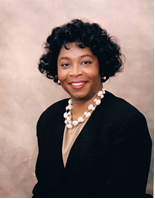From CNN:
Thurgood Marshall, Hattie McDaniel, the Tuskegee Airmen and Walter Morris — all African-Americans who made history breaking the color barrier. But while America’s first black Supreme Court justice, the first African-American Oscar winner and the U.S. military’s first African-American pilots are well known, you may never have heard of Walter Morris or his role in American history.
The War Department, as the Defense Department used to be called, wanted it that way. On Thursday, a ceremony at the Pentagon undid that.
When Walter Morris first joined the Army just before World War II, he wasn’t a “black” or “Negro” or “African-American” soldier — he was “colored.” And he was treated like all the other “colored” men who wanted to fight for their country.
“We were servants, we were not soldiers,” Morris said. “Most of us had an inferiority complex and it was a result of what they had assigned us to do.”
In the Deep South in the 1940s, racism was out in the open, including in the Army.
“You could walk down the street in the main post exchange area and in the summer the door would be open and you could look in and see white soldiers and prisoners of war from Germany sitting at the same table drinking, smoking,” Morris said. “That in itself gave you this inferiority complex. You are in uniform and you couldn’t go in, but the prisoners could go in and have coffee and cigarettes.”
But by the time he left the Army, Morris would become the first “colored” man ever to earn the U.S. Army Airborne Parachutist Badge. It’s all because he wanted to overcome that “inferiority complex.”
Morris was the sergeant for a unit of black soldiers at Fort Benning, Georgia. That’s where the Army was training white soldiers to be Airborne parachutists.
So after watching the white soldiers training, he would gather up black soldiers who had finished their jobs as cooks, guards or drivers, and they would duplicate the training the white trainees had just gone through.
While Morris was trying to build his men’s self-esteem, the War Department was quietly considering creating an all-black paratrooper unit. Morris soon found himself with a new job as the top noncommissioned officer for the new unit dedicated to training America’s first “colored” parachutists, the 555th Parachute Infantry Company, or the Triple Nickle. They decided to spell it differently from “nickel” to make sure people knew they were unique. The unit had plenty of doubters.
“They didn’t think colored soldiers had the intestinal fortitude to jump out of a plane in flight,” Morris remembered.
But the men proved the doubters wrong. Twenty soldiers started the training and on February 18, 1944, 17 soldiers graduated and earned the Parachutist Badge. As the unit’s first sergeant, Morris was the first man of the 555th to be pinned with the coveted “wings.”
“That was the happiest day of my life, because now I was a combat paratrooper,” Morris said.
But happiness was soon replaced by reality.
D-Day was approaching and the Triple Nickle wanted badly to jump into Europe to fight the Nazis. But the white officers who supported the Triple Nickle couldn’t convince the generals in charge in the European theater to put the unit to use.
“The Army had no place for us,” Morris recalls. “None of the commanding generals wanted the extra problem of integrating colored soldiers with the white soldiers, so they refused.”
But soon the Japanese military created a need for the Triple Nickle’s special skills — and this is why Walter Morris is not as well known as Thurgood Marshall or Hattie McDaniel.
Read the full story here.















